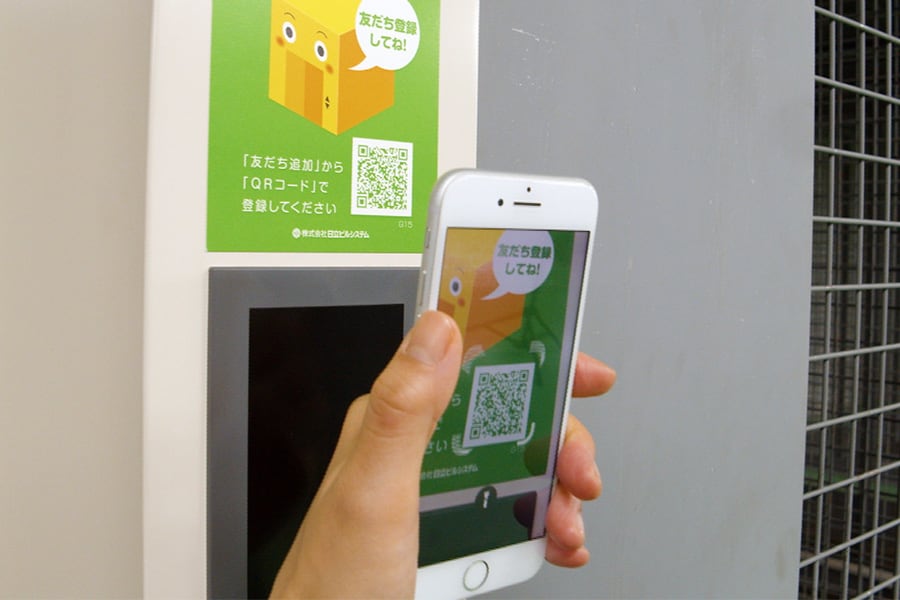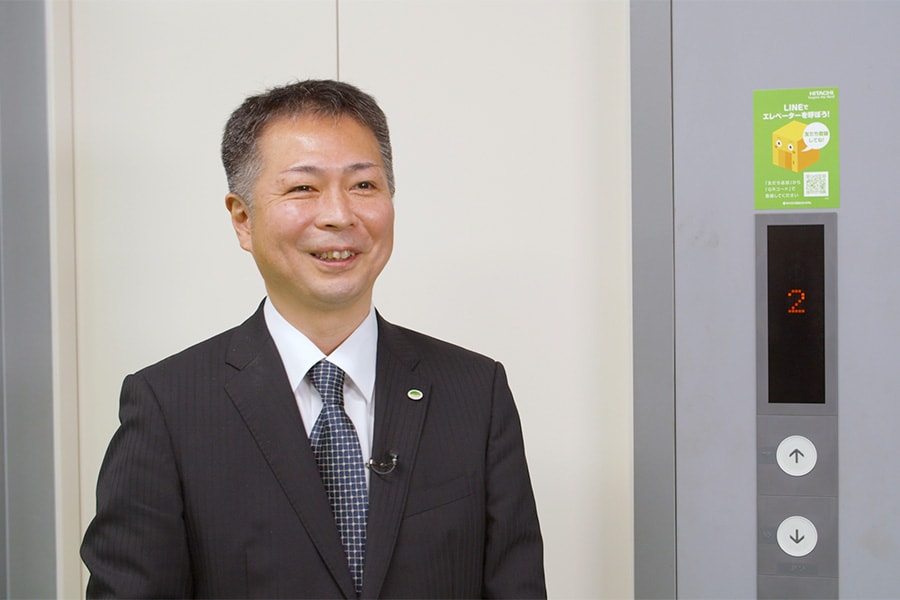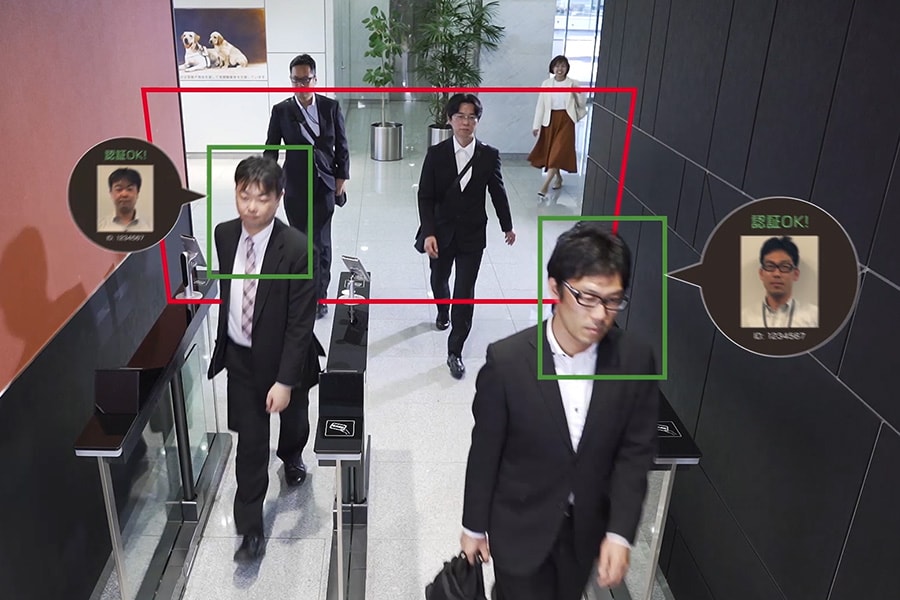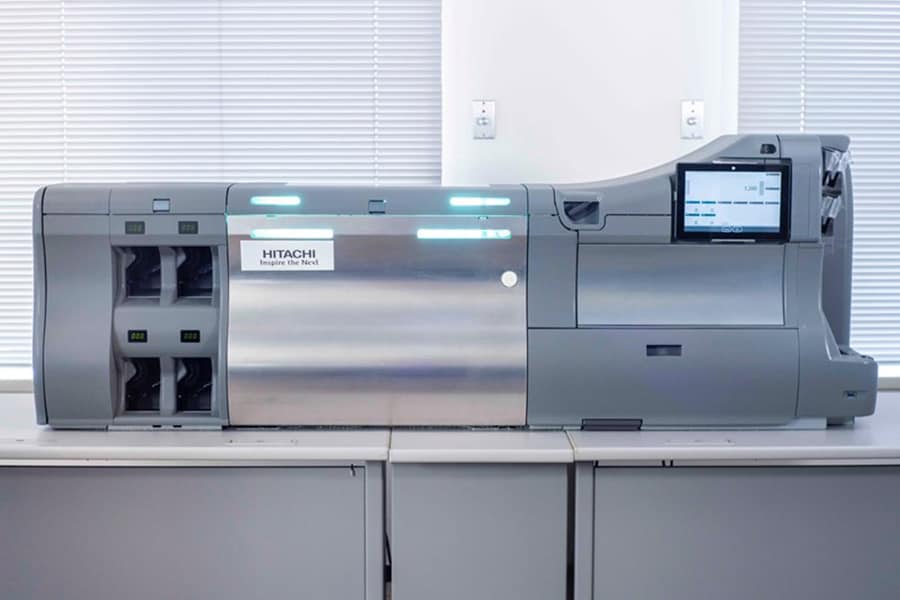Hitachi has unveiled the next generation of the OASIS™
Hitachi offers touchless service to call an elevator via LINE Using just a smartphone to get to your floor!
The number of infected people of COVID-19 in Japan has soared since last November. In January 2021, Japan’s government has declared the state of emergency which covers 11 prefectures.
The spread of COVID-19 has spurred increasing demand for touchless systems in daily life. Addressing this need, Hitachi, Ltd. and Hitachi Building Systems Co., Ltd. developed a service that enables the calling of an elevator by linking to the popular LINE messaging app.
This innovative service allows users to use a smartphone to operate an elevator without touching any buttons by actually “friending” the elevator's official LINE account.
Enabling immediate use by reading the elevator's QR Code®

The specific procedure for operating the service is as follows:
Elevators that support this new service will have on their walls a sticker with a QR code printed on it. Reading this code with a smartphone adds the elevator's official LINE account to the user's LINE friends. The elevator then sends the message "This is XX [elevator No.]. Nice to meet you, [user name]! Thank you for adding me to your friends." It will actually feel as if the elevator has become your friend.
After registration, move on to the actual calling of the elevator. Following the on-screen instructions, users select their starting and destination floors. Next, the Chat screen displays the request as, for example, "2nd floor to the 3rd floor, please." Then, the elevator responds with "OK!" The elevator arrives after a wait of a few seconds.
The mechanism is such that, when the doors open and the user boards the elevator, the button for the destination floor will already be pushed. The user will have undergone an extraordinary experience created out of the ordinary tools of LINE and a smartphone.
Ryoichi Sakai, Senior Engineer of Hitachi Building Systems' Digital Engineering Department and person in charge of the service’s development, comments as follows:
"Operating your smartphone at the elevator hall, the elevator car lands quickly. It gives you the impression of a direct connection between the smartphone and the elevator. In fact, instructions sent by users from smartphones are transmitted via the internet to the LINE server, and from there they are distributed to individual elevators via Hitachi's control center."
According to Sakai, the biggest challenge facing developers was how far the response time could be minimized.
During initial testing, Sakai says that the elevator needed nearly 10 seconds to respond after receiving a request from a user’s smartphone, and by eliminating unnecessary communication load, this duration was gradually reduced, eventually winding up in the range of two to a maximum of five seconds. In practice, this provides a stress-free experience when calling an elevator.
This development project was fast-tracked. In order to address the spread of COVID-19, Sakai says that the normal development period of one year was compressed into about five months and that Hitachi's HERIOS, an elevator remote monitoring system, was also a contributing factor to such high-speed development.
Elevators in Japan currently capable of implementing this service include about 15,000 standard elevators that are remotely monitored under a maintenance contract concluded with Hitachi Building Systems.
Providing a service that enables building owners to adopt easily

Steps for implementing this service into a building is quite simple. Elevator managers need only subscribe to an elevator remote control option of a maintenance contract (approx. 1,000 yen /month) to enable the service’s use at no additional cost.
The service starts about one to three months following application, after going through adjustments of the software loaded in the elevator, and performing field verification of elevator operation.
Precedents already exist in services provided by other manufacturers that enable calling an elevator by using a smartphone app. However, while these services require the downloading of a dedicated app, the most significant advantage of Hitachi’s service is that it utilizes LINE, a popular messaging service with reportedly 86 million monthly active users in Japan.
Sakai says that, "The idea for using LINE to differentiate ourselves from our competitors who preceded us arose out of internal discussion. I think this resulted in a tremendous success. Besides taking extra time to develop, a dedicated app puts users through hassles such as having to download a new app and enter personal information. In contrast, by using LINE, simply reading a QR code allows the service to be immediately available."
Elevators can now be called without touching buttons. This will be even more rewarding if it helps reduce the risk of contracting the COVID-19.
Given the rapid pace of development, this service is currently targeted at small to medium-size office and residential buildings with up to two elevators. Says Sakai, "While monitoring market response, we hope to go forward with considerations on expanding the scope of application and enhancing functionality."
-
*QR Code is a registered trademark of DENSO WAVE INCORPORATED.
-
*LINE and the LINE logo are registered trademarks of LINE Corporation.



